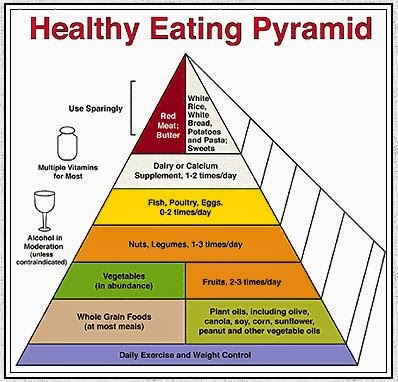The four types are:
Type 1 involves IgE antibodies, which attach to mucus membranes which release histamine. Allergic reactions usually occur within 1 to 60 minutes.
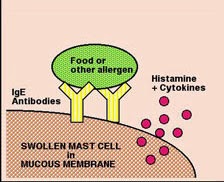
They cause classic symptoms, such as: asthma, rhinitis, (running nose), eczema, hives, red cheeks, etc. It is the most dangerous, and can be life threatening. The best test for this is the modified RAST blood test (IgE).
Type 2 involves lectin allergens that bind to ABO markers on cells, which include: red blood cells, mucous membranes, intestinal lining, and most other cells. This attracts IgG antibodies and killer cells, which destroy our red blood cells, and may cause anemia.
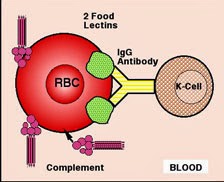
About 70 known food lectins attach specifically to A, B or O blood types. Most lectins are destroyed by cooking and digestion, and rarely cause serious problems. These allergens have been identified by the scientific literature for each blood type.
Type 3 involves food allergens, IgG antibodies, and neutrophils (white blood cells), which clump together to form large immune complexes in the blood.
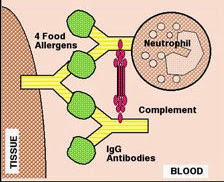
These deposit in the organs and tissues, where they cause inflammation and tissue damage, leading to chronic degenerative symptoms or diseases, such as autoimmune conditions, arthritis or kidney disease. The best tests for this are either a modified RAST or an ELISA blood test (IgG).
Type 4 involves T-Cells in the skin and soft tissues. Macrophages (white scavenger cells) engulf food allergens and transfer these to T-Cells.
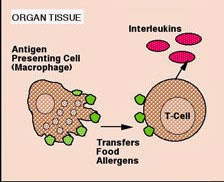
Both cells release interleukins (cell messengers) which stimulate the immune system and cause inflammation and tissue damage, leading to degenerative symptoms. The best test for this is the ELISA/ACT LRA blood test.
